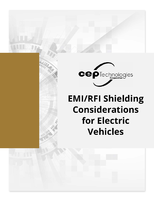Shortwave IR Emitters produce 0.9-1.6 microns max.
Press Release Summary:
Featuring back-mounted gold reflector, Shortwave Infrared Emitters offer heated lengths from 1-120 in., infinitely adjustable control, and linear power up to 400 W/in. They require practically no heating-up or cooling down times. With tube format of 23 x 11 mm, twin tube units feature filament temperature from 1,800-2,200°C and are designed for horizontal operation. They can be 1-side or 2-side connected.
Original Press Release:
Tech Center Spotlight: Shortwave Emitters
Fast and Intensive
Shortwave IR emitters from Heraeus are suitable for all applications in which the attainment of high temperatures in the shortest possible time is what counts. Their emission maximum is between 0.9 and 1.6 micron.
Performance Advantages
High radiation density in the most compact space up to 150 kW/m2 (100W/in2) output, low space requirements
Practically no heating-up and cooling down times
Good depth of radiation penetration into the material
Optimized reflection thanks to backmounted gold reflector: enhancing output and saving energy
Heated lengths from 1 inch up to 120 inches
Infinitely adjustable fast-reaction control
Stock, custom and OEM sizes
Linear power up to 400 Watts per inch
Twin tube emitters, tube format 23 x 11 mm
Filament temperature 1800 - 2200 °C
Peak wavelengths 0.9 - 1.6 µm
Standard emitters are designed for horizontal operation. The emitters are modified for vertical operation.
Emitters are available in different designs and can be one-side or two-side connected.
A gold coating of the emitter ensures that the effective radiation is virtually doubled.
Infrared heating technology transfers large amounts of energy in a short time. Emitters are available for large surfaces, for three dimensional shapes and for small work pieces. By matching infrared emitters to individual applications, heating and drying processes can be integrated seamlessly into processing operations. In addition, infrared technology can be fitted with little expenditure into existing manufacturing lines.
Infrared emitters allow optimum matching
There are infrared emitters with various spectra. Short wave infrared radiation penetrates more deeply into materials, medium wave radiation is absorbed more strongly at the surface and into thin films. The wavelength at which infrared is emitted significantly influences the efficiency of the heating process. Perfectly matched infrared emitters can allow energy savings of up to 50%.




